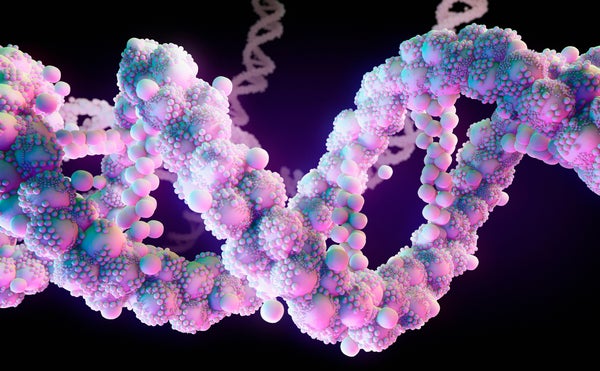A puzzle posed by segments of 'dark matter' in genomes—long, winding strands of DNA with no obvious functions—has teased scientists for more than a decade. Now, a team has finally solved the riddle.
The conundrum has centred on DNA sequences that do not encode proteins, and yet remain identical across a broad range of animals. By deleting some of these ‘ultraconserved elements’, researchers have found that these sequences guide brain development by fine-tuning the expression of protein-coding genes.
The results, published on January 18 in Cell, might help researchers to better understand neurological diseases such as Alzheimer’s. They also validate the hypotheses of scientists who have speculated that all ultraconserved elements are vital to life—despite the fact that researchers knew very little about their functions.
On supporting science journalism
If you're enjoying this article, consider supporting our award-winning journalism by subscribing. By purchasing a subscription you are helping to ensure the future of impactful stories about the discoveries and ideas shaping our world today.
“People told us we should have waited to publish until we knew what they did. Now I’m like, dude, it took 14 years to figure this out,” says Gill Bejerano, a genomicist at Stanford University in California, who described ultraconserved elements in 2004.
When nothing happens
Bejerano and his colleagues originally noticed ultraconserved elements when they compared the human genome to those of mice, rats and chickens, and found 481 stretches of DNA that were incredibly similar across the species. That was surprising, because DNA mutates from generation to generation—and these animal lineages have been evolving independently for up to 200 million years.
Genes that encode proteins tend to have relatively few mutations because if those changes disrupt the corresponding protein and the animal dies before reproducing, the mutated gene isn't passed down to offspring. On the basis of this logic, some genomicists suspected that natural selection had similarly weeded out mutations in ultraconserved regions. Even though the sequences do not encode proteins, they thought, their functions must be so vital that they cannot tolerate imperfection.
But this hypothesis hit a road block in 2007, when a team reported knocking out four ultraconserved elements in mice—and found that the animals looked fine and reproduced normally. “That was shocking—those mice should have been dead,” says Diane Dickel, a genomicist at the Lawrence Berkeley National Laboratory in California, and first author of the study in Cell.
A closer look
Dickel and her colleagues revisited the problem using the gene-editing tool CRISPR–Cas9. In mice, they deleted four ultraconserved elements—individually and in various combinations—that lie within regions of DNA that also contain genes important in brain development. Again, the mice looked okay. But when the investigators dissected the rodents’ brains, they discovered abnormalities.
Mice lacking certain sequences had abnormally low numbers of brain cells that have been implicated in the progression of Alzheimer’s disease. And those with another ultraconserved element edited out had abnormalities in a part of the forebrain that’s involved in memory formation, as well as epilepsy. “Normally it looks like a blade, but in these mice, the blade was squiggly,” says Dickel.
She suggests that the resulting cognitive defects would endanger mice in the wild. Therefore, variations in these ultraconserved regions would not spread through a population, because afflicted individuals would be less successful at reproducing than those who were unaffected.
Future studies might explore whether people with Alzheimer’s disease, dementia, epilepsy or other neurological disorders have mutations in these overlooked non-coding sequences. Although the functions of many other ultraconserved sequences remain unknown, Bejerano feels confident that they, too, will prove essential. But he remains perplexed by the level of conservation—up to 100%—in some of the sequences because biology often tolerates minor variations. “Mysteries are still on the table,” Bejerano says.
This article is reproduced with permission and was first published on January 18, 2018.
